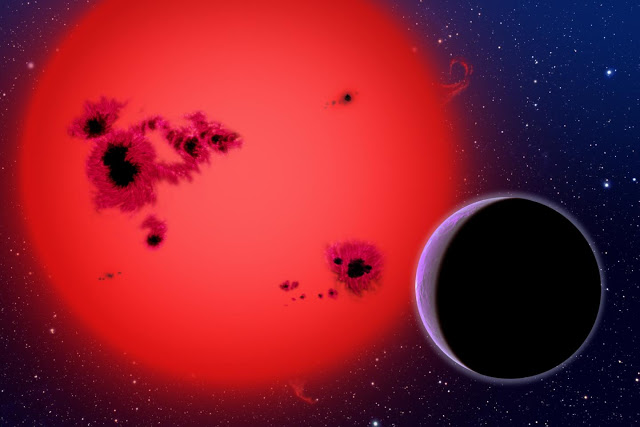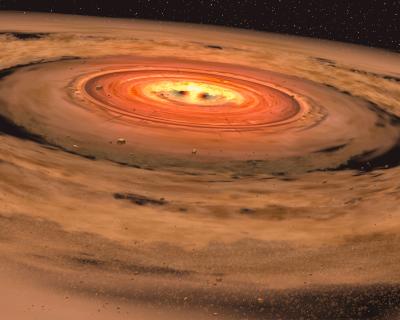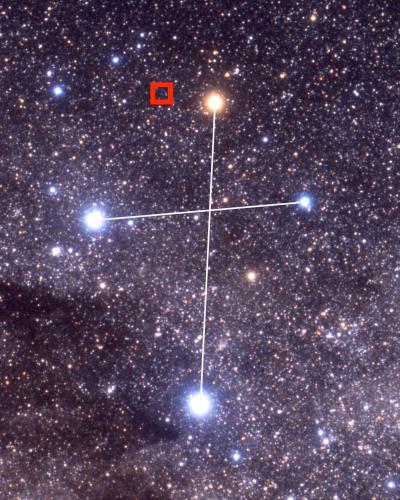| Online: | |
| Visits: | |
| Stories: |

| Story Views | |
| Now: | |
| Last Hour: | |
| Last 24 Hours: | |
| Total: | |
Nearby Red Dwarf Stars Could Reveal Planet Secrets
Astronomers from The Australian National University (ANU) and UNSW Canberra found large discs of dust around two of the stars, tell-tale signs of planets in the process of forming.

Credit: David A. Aguilar (CfA/Harvard-Smithsonian)
“However, other stars of this age usually don’t have discs any more. The red dwarf discs seem to live longer than those of hotter stars like the Sun. We don’t understand why,” said Dr Murphy.
The discovery of objects like these two challenges current theories about planet formation, said co-author Professor Warrick Lawson from UNSW Canberra.
“It suggests the planet forming process can endure a lot longer than previously thought,” he said
This is an artist’s impression of a disc forming into a solar system around a red dwarf.

Credit: NASA/JPL-Caltech/T. Pyle (SSC)
“I think a lot of telescopes will be turned toward them in the next few years to look for planets.”
The giveaway that the red dwarves had discs around them was an unusual glow in the infrared spectrum of the stars.
Although the discs were not observed directly, Dr Murphy said such close red dwarves offered a good chance of catching a rare direct glimpse of a disc, or even a planet, by employing specialised telescopes.
“Because they are fainter than other stars and there is not as much glare, young red dwarves are ideal places to directly pick out recently formed planets,” he said.
This image shows the location of one of the red dwarves, 2M1239-5702, near the Southern Cross.

Credit: Akira Fujii
Our ability to detect these dim stars has improved dramatically in recent decades, revealing a wealth of information, said Professor Lawson.
“Less than 20 years ago, the notion that the nearest part of the Galaxy would be littered with young stars was a completely novel one,” he said.
“Most of these objects lie in the southern sky and thus are best accessed by telescopes in the southern hemisphere, including those operated by the ANU and Australia more broadly.”
The research is published in the Monthly Notices of the Royal Astronomical Journal.
Dr. Simon Murphy
Source:



